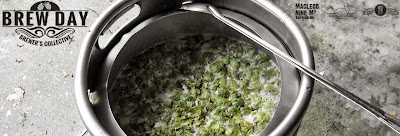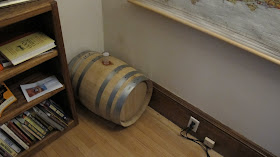I digress. During my brief stint as a homebrewer in Korea I managed to pick a few tips and tricks along the way that never made it as their own post. So this is a small compendium of what I've learned while brewing here and some of the websites that have made life much easier. If there's something missing, or anything you have a question on, please feel free to leave a comment below!
Tips
Make Ice at HomeSounds ridiculously simple, right? Just make some ice at home. Fill up a tray or two and you should be good... unless you're attempting to make enough to chill 4kg of boiling hot wort. Obviously wort chillers and plate chillers would be the best option, but they require a sink that actually cooperates with you and allows attachments. I've yet to be lucky enough to have one of those. Also, chillers take up more precious space, which should always be factored into the decision making while living in Korea.
In the past I would hop down to the liquor store and pick up a few bags of ice to lug back home. Not the biggest deal in the world, but it's still annoying and on a hot day can create quite the watery mess. I might be game for doing that here, but few of the local marts carry big-ol-bags of ice like those back in the States.
Easiest solution: reuse your water bottles. Since the tap water here is almost as bad as Hite no one drinks it, which forces you into buying a lot of bottled water (or a water filter if you're fancy pants). One of the fine side effects of this is having a ton of rather large plastic water bottles you can repurpose.
Invest in a Bench Capper
This wasn't a must for my home operation in the States, but it was essential here. The vast majority of the bottles I was able to find here have rounded tops that make it almost impossible for the winged capper to clamp on to and force the cap on. With the bench capper it's not an issue. Simply adjust the back to any height you need, 350ml or the bigger 500ml bottles are both quite easy. Not to mention it saves your hands quite the workout.
I spent a little more than I would've preferred on mine through Beer School, but it's the one and only piece of equipment that will be making the flight home with me. Worth every penny.
Resources
Seoul HomebrewUnfortunately for me, this site wasn't up and running when I first arrived and started brewing in Korea. As I mentioned in the Getting Started post back in April, Beer School was my preferred website... but... well... things change. Beer School was a great option when nothing else existed, but there was the whole Beer in a Can mixup and then mystery ingredients for my first BIAB batch, so my confidence in their abilities has slightly diminished. Could still be a great source for materials if needed.
However, Seoul Homebrew has a wealth of materials and resources and it's all in English. Moreover, it's actually run by folks who know homebrew and has everything from starter kits and recipe kits for the novice to multiple grain options for the more experienced brewer. Hell, they even have their own recipes section with in-house materials to try out different styles. The only downside to the site is the lack of activity in their forum, but that may pick up in time and leads quite nicely into the next resource website.
Homebrew Korea
Though it seems there were once ambitions of become a true homebrew store, this site is an amazing knowledge resource. A self-proclaimed "community of brewers for brewers," their Community Forum tackles everything from starting equipment to water testing. Though some of the post dates are older, the group is still quite active and will often post about community events or exciting news in the world of Korean beer. While Home Brew Talk is still probably the best forum for the hobby, Homebrew Korea offers more specifics of brewing in The Land of the Morning Calm.
Nikobrew
Should you have issues finding the hops you'd like on Seoul Homebrew, this lovely little site will have your head spinning at the options available. They have roughly 100 ordering options on their hops page. As far as shipping goes, it's not exactly cheap, but it's not going to break the bank for what you'll get in return. Up to four full pounds of hops is a scant $25 through USPS Priority International. Check out their Shipping page for more info.
Brew Your Own Magazine
Speaking of hops, oh my what a substitution chart they have over at BYO! You can scroll through the various styles, get substitutions and they even give an idea of what the flavor profile will be. Back in the States I didn't have to worry about substitutions very often, but here in Korea it's been a gigantic part of every single recipe development and this gem of a site has come in handy on more than a few occasions. Should you need a grain substitution chart, there's one housed right here on Brew Day.
But back to BYO. This is also a fantastic source for recipes. A great deal of the ones we've developed on this site have either come directly from BYO, or are a very close adaptation. All in all, I'd highly recommend just subscribing to BYO. They even have a digital edition for those of us far far away.

























































